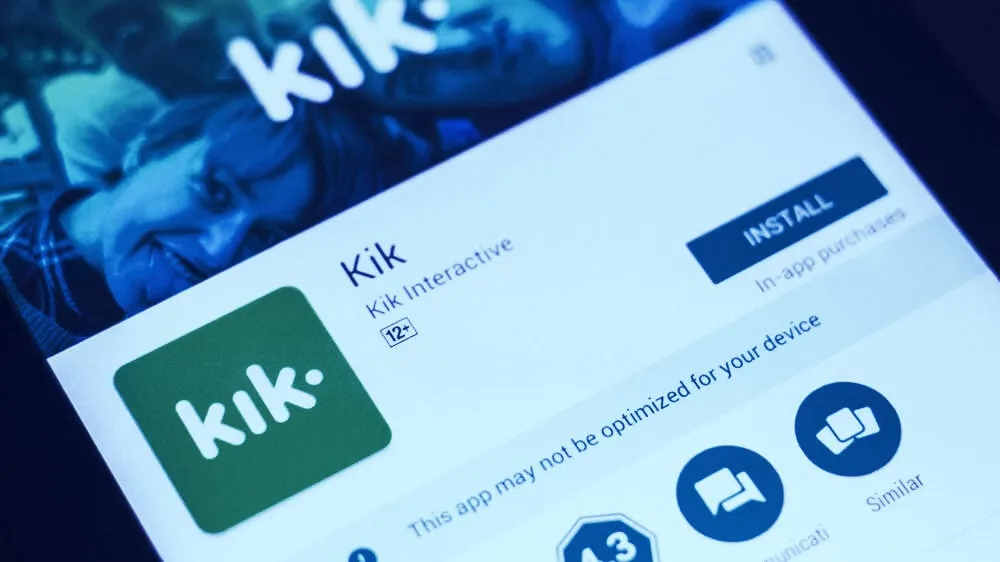In 2015, messaging app Kik achieved unicorn status after a $50 million investment from Tencent, owner of Chinese rival WeChat. It was the first messaging app to create a platform for developers (in 2011), and the first to feature chatbots. Its founder, Ted Livingston, said it aimed to be the “WeChat of the West;” it even aspired to take on messaging app tech giant Facebook.
Cut to today, and things aren't looking quite as rosy. Canada-based Kik has 15 million monthly active users worldwide and fails to maintain a place among Statista’s top messaging apps. Nevermind Facebook, Kik trails Statista’s bottom-ranked Telegram, which has 200 million monthly users. Among other problems, Kik, which was huge among U.S. teenagers, got a bad rap as being a tool for pedophiles to trade child porn and groom children.
But Kik has managed to dig itself out of the mess, and is once again alive and, well— kicking. It’s been orchestrating a pivot of sorts, pinning its hopes on Kin, a cryptocurrency it launched last year, which it hopes will underpin an ecosystem of digital services including everything from chat apps to in-game purchases. The Kin ICO sold off 1 trillion tokens (a tenth of the total supply) last September raising $50 million; that was on top of $50 million it had raised during an earlier presale to institutional investors.
To stimulate demand for the token, the Kin Foundation, which governs the cryptocurrency, recently accepted 40 developers into the first stage of a $3 million Kin Developer's Program. The program gives each project that introduces a new use case for Kin up to $60,000—and 400 million Kin, for the developers to spend on improving their project. By widening the use of Kin as an in-app cryptocurrency, Kik hopes to raise awareness of its own app, which will have native Kin support.
Kin is actually the second digital currency that Kik has issued. Between 2014 and 2016, the messaging platform introduced Kik Points, a centralized digital currency that Kiksters used to make 74 million purchases. With an average daily volume of 300,000 transactions, it showed an appetite for using in-app digital payments to buy themed stickers and smileys. It couldn't be classed as a cryptocurrency, however, as the points system was only available within the Kik app.
Indeed, in its whitepaper, Kik says that this desire for digital payments exists well beyond its own app—which is where Kin comes in. By encouraging other developers to integrate Kin into their apps, it could bring greater awareness to the “home of Kin,” the Kik app itself. Six trillion Kin, excluded from the token sale, will be used to grow the Kin ecosystem and fund the foundation.
So far, the move has been warmly received by developers, who are looking for an easy, plug-and-play payment mechanism to add versatility to their own dapps. “Kin will empower dapp developers to harness the power of cryptocurrency without having to create their own cryptocurrencies,” says Thomas Houge, CEO of FInd, a travel-buddy app.
Kik’s vision is that it will be one of thousands of services in the Kin ecosystem. It hopes this will create a network effect which will increase the price of Kin. Kik stands to benefit as it holds three trillion Kin, a third of the total supply. Though that was worth $3 billion in January, it’s still hovering at around $300 million—enough to turn around a struggling messaging app.
Read Next: High Times attempt to accept bitcoin for its IPO? Nevermind

